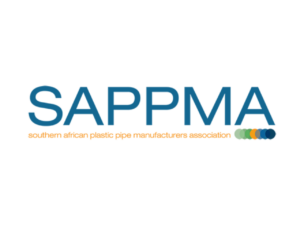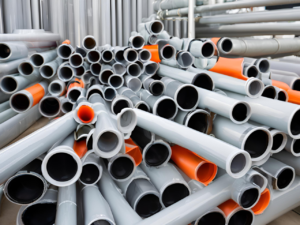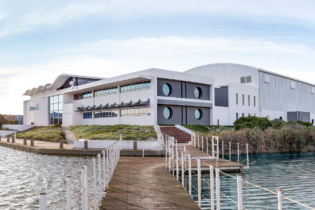The history of plumbing is deeply rooted in the ancient civilisations of the world. From the grand cities of the Greeks, Romans, Persians, Indians, and Chinese, the need for efficient water supply and waste management systems was recognised early on. These ancient societies were among the first to develop public baths, necessitating the creation of plumbing systems to provide potable water and manage waste disposal for their growing populations. By 2700 B.C., the Indus Valley Civilisation had already standardised the use of earthen pipes with broad flanges, sealed with asphalt to prevent leakages – an impressive feat in early urban engineering.
The Romans further advanced plumbing with the introduction of lead pipes, which were inscribed to prevent water theft – a testament to the value they placed on this vital resource. Despite these early innovations, progress in plumbing systems was remarkably slow. It wasn’t until the 1800s, with the rise of densely populated cities, that public health authorities began advocating for better waste disposal systems. This period marked the beginning of underground water and sewage systems that replaced open sewage ditches and cesspools, fundamentally transforming urban sanitation.The Emergence of Plastic Piping Systems
For much of modern history, materials like clay, lead, bamboo, wood, and stone were the primary materials used for piping. Early U.S. cities utilised hollowed wooden logs for water distribution, a practice that persisted into the 1800s. The advent of copper piping in the 1960s, replacing galvanised iron and lead, was a significant step forward due to copper’s non-toxic properties. The real game-changer came with the introduction of plastic piping. Plastics, now ubiquitous in everyday life, started to gain prominence in the mid-20th century. The first synthetic plastic, Bakelite, was invented in 1909, and by the 1950s, plastic production had expanded to include materials like polyethylene (PE), polyvinyl chloride (PVC), and polypropylene (PP). These materials quickly became the standard for piping due to their durability, resistance to corrosion, and ease of installation.Plastic Pipes: The Modern Standard
 Today’s plumbing systems are dominated by plastic pipes, which offer numerous advantages over traditional materials. PVC and HDPE are particularly popular for their strength, flexibility, and resistance to chemicals and temperature changes. These materials are commonly used for water supply, sewage, and drainage systems, as well as in applications like irrigation and gas distribution.
The manufacturing process of plastic pipes and pipe fittings involves various methods such as extrusion, injection molding, and blow molding. These techniques allow for the production of pipes in a wide range of sizes and specifications, making them suitable for diverse applications. However, the production and application of these pipes also require stringent quality control to ensure they meet international standards, especially since they form an integral part of infrastructure.
In 1955, at the Plastics Fair in Düsseldorf, now known as the K-Fair, the first pipes made from a groundbreaking plastic material were introduced. This material, high-density polyethylene (HDPE), was invented that same year and quickly became the solution to the significant infrastructural challenges Europe faced in the aftermath of World War II.
HDPE has since built a strong reputation for its strength, reliability, and low leakage rates, with its application as a pipe material evolving rapidly. The initial material, known as Type 50 or PE50, was soon replaced by PE63 in 1959. By 1977, PE80 materials, featuring higher stiffness and improved crack resistance, were introduced. In the 1990s, HDPE pipe material underwent a significant transformation with the development of bi-modal resin manufacturing technologies, enhancing its strength by 25% and leading to the adoption of PE100 materials, which offered greatly improved resistance to in-service cracking. Further advancements were made with the introduction of high stress crack resistance materials, also known as RC materials.
Despite the relatively low crack resistance of the early materials, many polyethylene pipelines installed in Europe during the 1960s and 1970s remain in service today and are expected to last for several more decades.
Today’s plumbing systems are dominated by plastic pipes, which offer numerous advantages over traditional materials. PVC and HDPE are particularly popular for their strength, flexibility, and resistance to chemicals and temperature changes. These materials are commonly used for water supply, sewage, and drainage systems, as well as in applications like irrigation and gas distribution.
The manufacturing process of plastic pipes and pipe fittings involves various methods such as extrusion, injection molding, and blow molding. These techniques allow for the production of pipes in a wide range of sizes and specifications, making them suitable for diverse applications. However, the production and application of these pipes also require stringent quality control to ensure they meet international standards, especially since they form an integral part of infrastructure.
In 1955, at the Plastics Fair in Düsseldorf, now known as the K-Fair, the first pipes made from a groundbreaking plastic material were introduced. This material, high-density polyethylene (HDPE), was invented that same year and quickly became the solution to the significant infrastructural challenges Europe faced in the aftermath of World War II.
HDPE has since built a strong reputation for its strength, reliability, and low leakage rates, with its application as a pipe material evolving rapidly. The initial material, known as Type 50 or PE50, was soon replaced by PE63 in 1959. By 1977, PE80 materials, featuring higher stiffness and improved crack resistance, were introduced. In the 1990s, HDPE pipe material underwent a significant transformation with the development of bi-modal resin manufacturing technologies, enhancing its strength by 25% and leading to the adoption of PE100 materials, which offered greatly improved resistance to in-service cracking. Further advancements were made with the introduction of high stress crack resistance materials, also known as RC materials.
Despite the relatively low crack resistance of the early materials, many polyethylene pipelines installed in Europe during the 1960s and 1970s remain in service today and are expected to last for several more decades.HDPE pipe materials have been manufactured in South Africa since 1972. The current PE100 material produced by local company Safripol, known as iMPACT100®, is certified as compliant with ISO and SANS standards for water and gas piping
The Role of Standards and Industry Associations
 In South Africa, the Southern African Plastic Pipe Manufacturers Association (SAPPMA) plays a crucial role in maintaining the quality and integrity of plastic pipes. SAPPMA is a voluntary, self-regulating, non-profit association that represents major stakeholders in the plastic pipe industry. It is the association’s mission is to create absolute customer confidence in the industry, thereby ensuring that plastic pipes are not only fit for purpose, but also offer long-term sustainability.
SAPPMA’s commitment to quality is evident in its rigorous standards and quality assurance programs. The association monitors its members to ensure adherence to national and international standards, providing an additional safeguard against sub-standard products. This is particularly important in the context of South Africa, where plastic piping networks are vital for the country’s water supply and sewage disposal needs.
Earlier this year, SAPPMA launched Project “Superior Quality 2024” (SQ24), an initiative aimed at addressing issues related to suspect quality in plastic pipes, particularly those made from HDPE. The project introduces stricter standards, enhanced monitoring, and a public awareness campaign to promote superior quality in the industry. These measures underscore SAPPMA’s unwavering commitment to excellence and its role as a guardian of the plastic pipe industry’s reputation.
The concept of quality encompasses quite a few aspects, with two of the most important being product standards and certification. It is important to ensure that members operating in the local plastic pipe industry meet the standards of application criteria such as supplying pipe for freshwater reticulation when undertaking critical projects. For this reason, SAPPMA’s factory audits remain a key factor in the success of the Association. Announced and unannounced audits take place throughout the year at all pipe manufacturers and installation companies to ensure increased quality awareness and compliance. Recently SAPPMA has also adjusted the focus of audits, with less emphasis on systems and more on materials. Verified plastic pipe producers and affiliated suppliers are awarded the SAPPMA mark of accreditation as part of its continuous efforts to improve and maintain standards in the very important plastic pipes industry.
Although formal certification in accordance with national standards must be handled by SANAS accredited authorities, there remains a strong need in the market for the work and influence of SAPPMA, as an experienced and knowledgeable body without profit motive. In this regard, SAPPMA strives to maintain good contact with the certification authorities.
In South Africa, the Southern African Plastic Pipe Manufacturers Association (SAPPMA) plays a crucial role in maintaining the quality and integrity of plastic pipes. SAPPMA is a voluntary, self-regulating, non-profit association that represents major stakeholders in the plastic pipe industry. It is the association’s mission is to create absolute customer confidence in the industry, thereby ensuring that plastic pipes are not only fit for purpose, but also offer long-term sustainability.
SAPPMA’s commitment to quality is evident in its rigorous standards and quality assurance programs. The association monitors its members to ensure adherence to national and international standards, providing an additional safeguard against sub-standard products. This is particularly important in the context of South Africa, where plastic piping networks are vital for the country’s water supply and sewage disposal needs.
Earlier this year, SAPPMA launched Project “Superior Quality 2024” (SQ24), an initiative aimed at addressing issues related to suspect quality in plastic pipes, particularly those made from HDPE. The project introduces stricter standards, enhanced monitoring, and a public awareness campaign to promote superior quality in the industry. These measures underscore SAPPMA’s unwavering commitment to excellence and its role as a guardian of the plastic pipe industry’s reputation.
The concept of quality encompasses quite a few aspects, with two of the most important being product standards and certification. It is important to ensure that members operating in the local plastic pipe industry meet the standards of application criteria such as supplying pipe for freshwater reticulation when undertaking critical projects. For this reason, SAPPMA’s factory audits remain a key factor in the success of the Association. Announced and unannounced audits take place throughout the year at all pipe manufacturers and installation companies to ensure increased quality awareness and compliance. Recently SAPPMA has also adjusted the focus of audits, with less emphasis on systems and more on materials. Verified plastic pipe producers and affiliated suppliers are awarded the SAPPMA mark of accreditation as part of its continuous efforts to improve and maintain standards in the very important plastic pipes industry.
Although formal certification in accordance with national standards must be handled by SANAS accredited authorities, there remains a strong need in the market for the work and influence of SAPPMA, as an experienced and knowledgeable body without profit motive. In this regard, SAPPMA strives to maintain good contact with the certification authorities.








